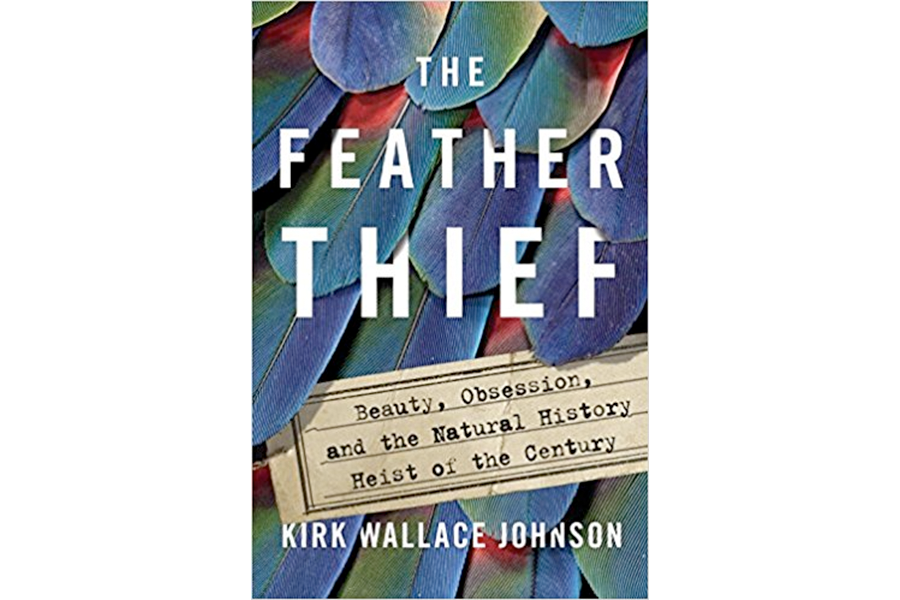In 'The Feather Thief,' a British bird burglary exposes a hidden world
Loading...
In the summer of 2009, avian anxiety engulfs a pair of bird-obsessed men in England.
One is an Englishman who curates a prominent British bird collection. He arrives at work at the Natural History Museum at Tring to discover someone has broken in overnight, almost certainly to steal its rare and priceless specimens. Maybe the burglar swiped Charles Darwin's famous finches or pilfered the skeletons of the famously extinct Dodo and Great Auk. Worst of all, the museum's copy of "Birds of America" – one of the most valuable books in the world – might be gone for good.
But an urgent search bizarrely turns up nothing missing.
At the same time, elsewhere in London, the other man – an American flute player who's barely out of his teens – isn't thinking about his recent performance at the Royal Academy of Music. Instead, he's mulling what to do with his remarkable booty of 299 specimens of fabulously colorful species like the King Bird of Paradise, the Flame Bowerbird, and the Resplendent Quetzal.
Why on earth would a talented musician risk a prison term by stealing a bunch of bird skins? A fascinating new book provides the answer while exploring the bold derring-do of naturalists, the batty heights of Anglo-American eccentricity, and the high price of our never-ending attraction to beauty in nature.
One of the most fascinating characters is the author himself, a young man named Kirk Wallace Johnson who worked in reconstruction and development in Iraq.
A few years ago, he went to New Mexico to fly-fish after a difficult period of suffering a PTSD-related accident and working with mixed success to support Iraqi refugees who'd helped the American military. That's where he learns from a fellow fisherman about the bizarre 2009 bird heist.
Soon, he launches a quest to understand the burglary and the burglar ... and find those feathers. His journey unfolds in The Feather Thief: Beauty, Obsession, and the Natural History Heist of the Century, one of the most peculiar and memorable true-crime books you're ever likely to read.
Plumage, it turns out, is a plum business. Feathers have kindled obsession for generations, going back to the days when intrepid naturalists traveled afar in search of exotic birds to stash in displays or drawers.
New Guinea is a special draw due to its unique status as a kind of evolutionary wonderland. As Johnson explains, its isolation and a lack of predators allow something called "runaway selection."
Without needing to worry about hiding or arming themselves, birds keep their eyes on the prize: wooing a mate. And how better to attract the opposite sex than to evolve some major bird bling by way of feathers of cobalt blue, metallic green and cinnabar red?
One explorer is so astonished he frets over such a "wanton waste of beauty" with so few eyes to gaze upon it. But that wasn't the case for long. Rich people soon demand these pieces of beauty for themselves, if not the whole bird then a few feathers in a cap or in an elaborate fly-fishing lure.
Wait, fly-fishing is part of this story? Oh yes indeed. Enter the bait-obsessed Feather Thief, who's so bumbling that he actually creates a Word document titled "PLAN FOR MUSEUM INVASION."
Johnson is an intrepid journalist who doesn't mind venturing into the arcane world of, say, a Victorian salmon-fly-tying symposium held at a DoubleTree in New Jersey. He also has a fine knack for uncovering details that reveal, captivate, and disturb.
This story, after all, describes the market for feathers from creatures killed to serve the needs of scientists, fly-fishers (feather-bedazzled lures can cost almost $2,000 each), and fashionistas.
"Before the Hermès bag or Louboutin heel, the ultimate status symbol was a dead bird," Johnson writes. Nineteenth-century Paris is home to hundreds of "plumassiers," and some ladies' hats are so burdened by bird pelts that "women were forced to kneel in their carriages or ride with their heads out the window."
Thankfully, this horrific fad vanishes as humanity learns to appreciate the value of preserving nature.
Johnson also explores the quirky history of the burgled Tring museum itself, a onetime private collection created by "one of the most tragically obsessed bird collectors ever to roam the earth." During the London bombings of World War II, it's one of many mansions that stashed valuable bird collections relocated for safekeeping from the British Museum.
"The Feather Thief" reveals the value of these rare beauties as artifacts of the past and, potentially, harbingers of the future. Fortunately, they were preserved by vigilant curators who "understood that the birds held answers to questions that hadn't yet even been asked."
Now, the specimens are offering insight into mysteries like bird evolution and migratory patterns. And their DNA may help biologists preserve the rare and endangered California Condor and even resurrect long-gone species like the Passenger Pigeon. Once the most common bird in North America, its flocks would darken the sky for hours. The last survivor, a Cincinnati celebrity named Martha, breathed her last over a century ago.
Martha wasn't as pretty as other preserved birds. But her work – and theirs – is far from finished.






